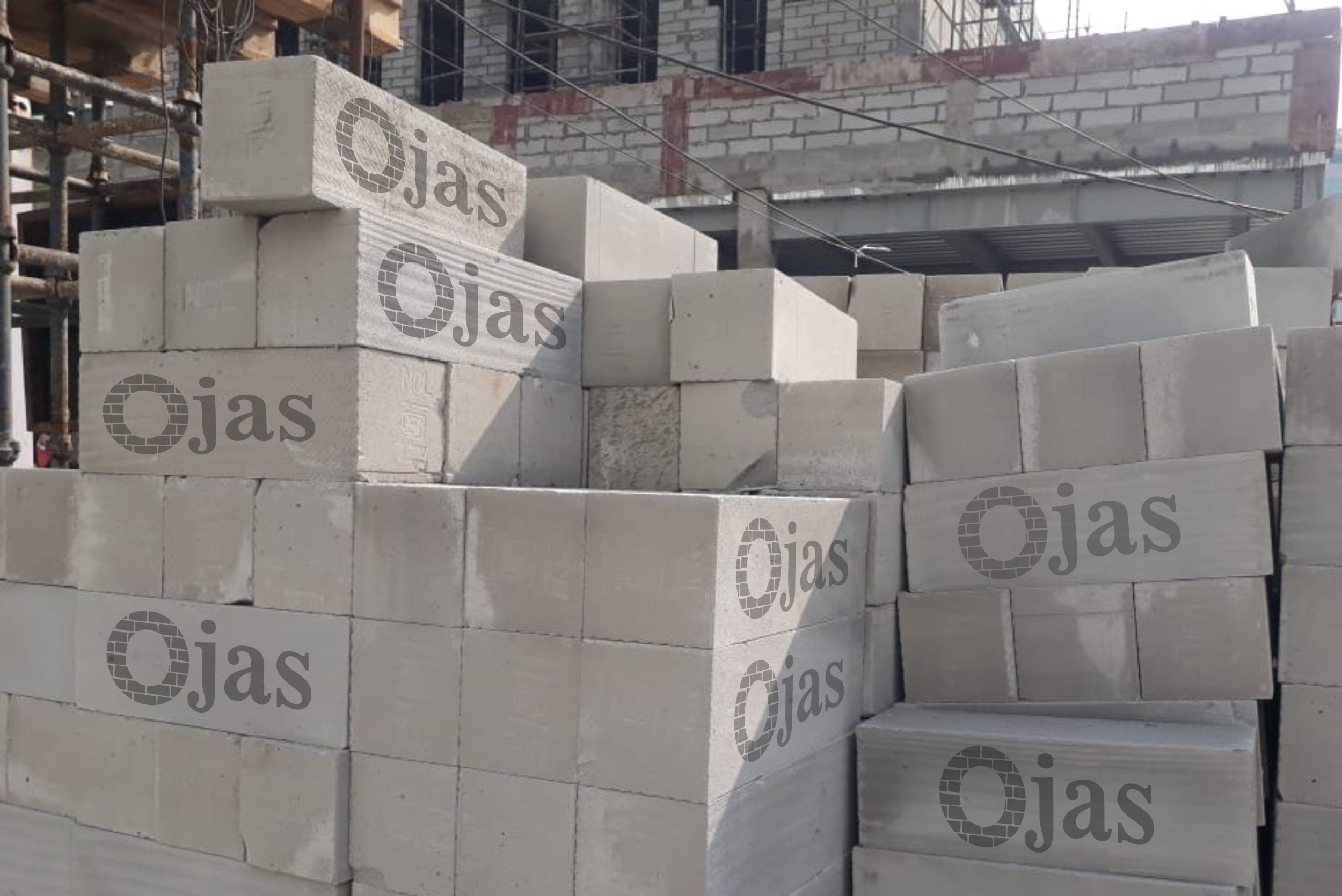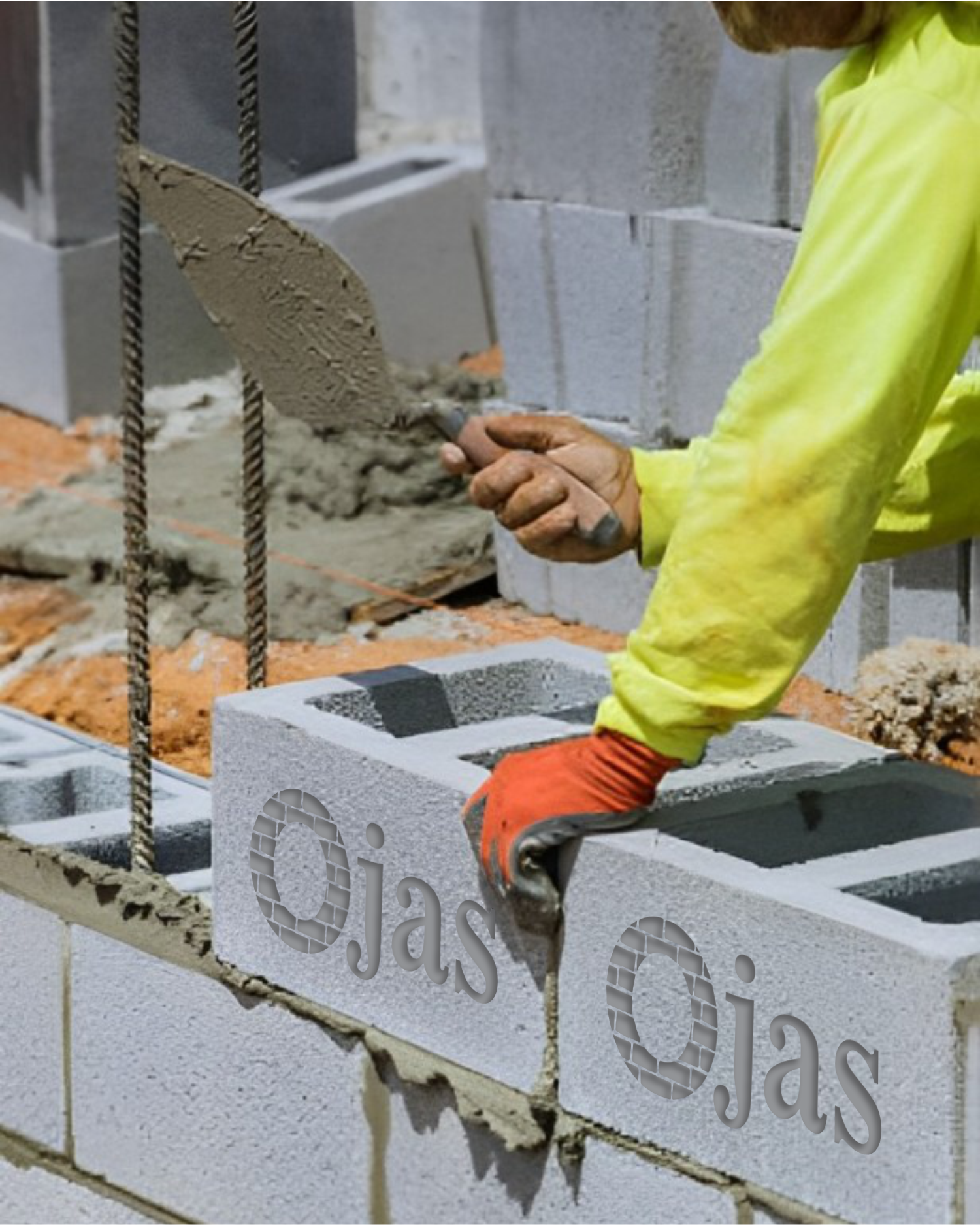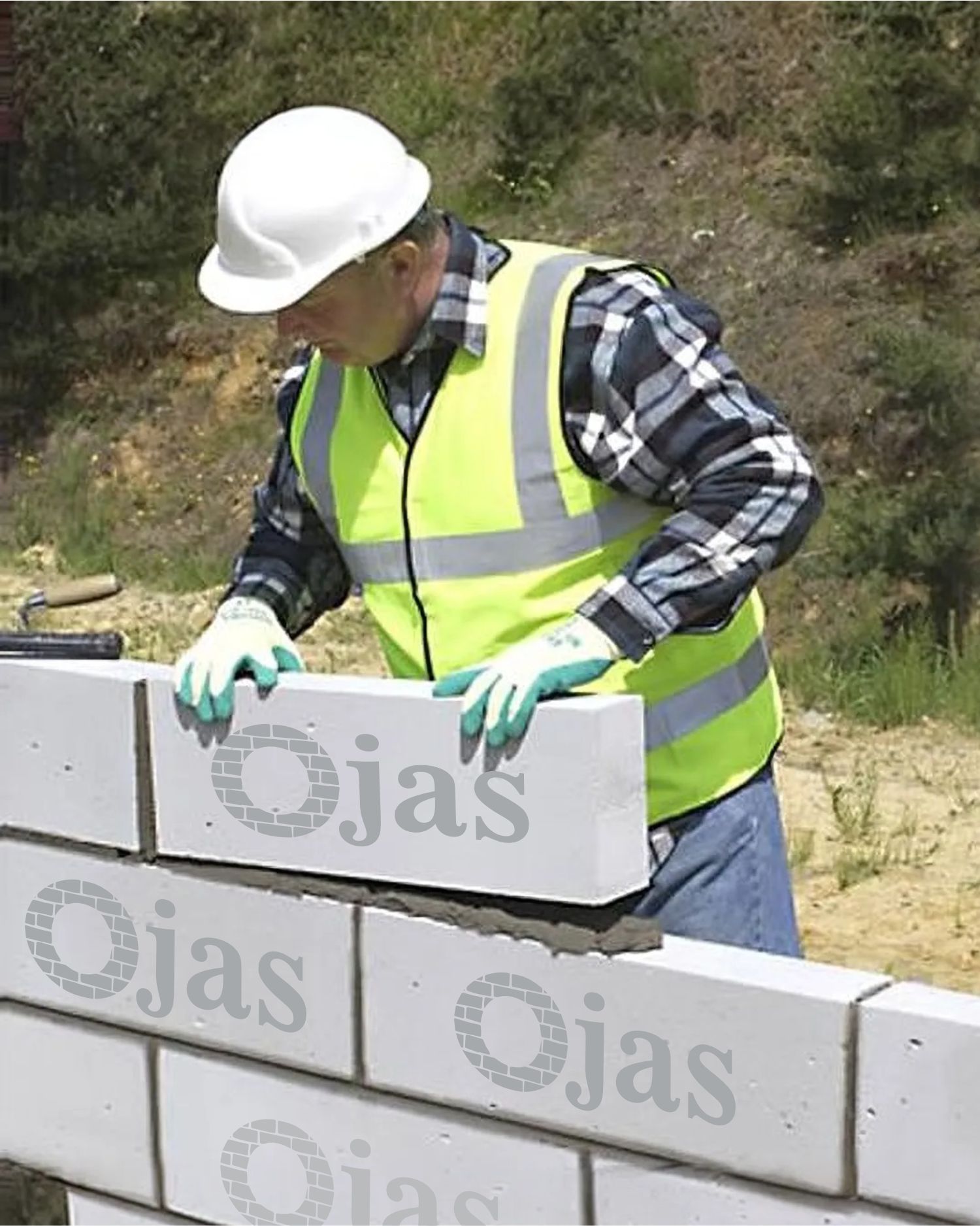AAC based
Fly Ash-Based AAC Blocks
Fly Ash-Based AAC Blocks are another type of Autoclaved Aerated Concrete (AAC) block that primarily utilizes fly ash, a byproduct of coal-fired power plants. Compared to sand-based AAC blocks, ash-based blocks often have a coarser texture and lower strength.

Characteristics
Often have a coarser texture, lower strength compared to sand-based blocks.

Applications
Typically used for non-load-bearing walls, partitions, and roof slabs.

Size and Shape of Fly Ash
Fly ash specific gravity ranges from 1.90 to 2.96, influencing AAC block properties.

Note: All tests are carried out at manufacture’s end, Specifications are derived internally and based on standard methods. Flexural strength, Pull Off Adhesion and Water Retention is conducted as per EN standard methods.
AAC based
Fly Ash-Based AAC Blocks optimization
- Structure
- Specifications
- Easy-to-handle
- Hardiness and Toughness
- Heat Resistance
Structure
Fly Ash Bricks are made from a blend of fly ash, cement, sand, and water, offering a sustainable and cost-effective building material. The use of fly ash, a by-product of coal combustion, helps in recycling industrial waste, making them an eco-friendly option. These bricks are known for their strength, durability, and resistance to cracking, which makes them suitable for a variety of construction projects.

Specifications
Fly Ash Bricks typically measure 220 mm in length, 110 mm in width, and 90 mm in height, with an approximate weight of 2.6 kg per brick. These bricks are compact and lightweight, which makes them easy to transport and handle. Due to their smaller size, they require more labor-intensive work to lay, but they are ideal for smaller to medium-sized construction projects where ease of handling and cost-effectiveness are crucial. Additionally, Fly Ash Bricks offer good compressive strength and durability, making them suitable for load-bearing walls and other structural components.

Easy-to-handle
Fly Ash Bricks are notably lighter, whereas AAC Blocks are more substantial. This variation in weight impacts the convenience of handling and transporting materials during construction. The lighter nature of Fly Ash Bricks allows for easier maneuverability, reducing labor effort and lowering transportation costs. In contrast, the heavier AAC Blocks, while providing greater strength and durability, require more careful handling and may increase logistics and workforce requirements on site.

Hardiness and Toughness
Fly Ash Bricks provide reliable compressive strength and long-lasting durability. In contrast, AAC Blocks deliver superior strength and durability, with added benefits. AAC Blocks are highly resistant to fire, pests, moisture, and harsh weather conditions, making them an ideal choice for a variety of construction needs. Their excellent thermal insulation properties further enhance energy efficiency, helping to maintain comfortable temperatures indoors while reducing energy consumption.

Heat Resistance
One of the key advantages of AAC Blocks is their exceptional thermal insulation. The air-filled cellular structure of these blocks significantly reduces heat transfer, promoting a more comfortable indoor climate and offering potential energy savings. This makes AAC Blocks an ideal choice for energy-efficient buildings, as they help maintain stable temperatures throughout the year, reducing reliance on heating and cooling systems.

AAC based
Fly Ash-Based AAC Blocks optimization
Substrate Preparation
The blocks should be brushed to remove any dust or loose particles. To neutralize the suction of the blocks, apply clean water to their surface. Allow the water to disperse before proceeding with the application of Block Fix.

Packaging & Storage
Ojas block Fix is a premium quality, ready-to use adhesive for masonry work and has a shelf life of 6 months subject to proper storage in a cool and dry place.
- Premium Quality
- Ready to Use
- Shelf life of 6 months
- Light weight and good Strength

Blending Process
Block Fix is available in 40kg bags and should be mixed with clean water in a clean mixing container. Add 9-10 liters of clean water to each 40kg bag, ensuring the water is added to the container before the Block Fix. Mix the material thoroughly using a mechanical stirrer. Allow the mixture to stand for 5 minutes, then stir again before application, without adding any additional water. Do not use material that has started to harden or form lumps.

Water Demand
The amount of water should be added should be treated as a general guideline. Depending upon the substrate and climatic approx.10 to 12 liters of water per 40kg bag of OJAS Block Fix is required.
- Production process
- Raw material composition
- Desired block properties
- Environmental factors

Implementation
Apply Block Fix to the block and lay it within the specified open time. To ensure a uniform mortar thickness, use a serrated trowel to comb the mortar before placing the block. Press the masonry blocks into the mortar, ensuring uniform vertical joints with a minimum gap.

Coverage
Coverage of OJSA Tile FIX 3mm thick jointing of 1mm square is approx. 100 to 120 sq.ft. The actual coverage in sq.ft per bag of OJAS Block Fix will depend upon the quality and evenness of the substrate.
- Determine the block size
- Joint thickness
- Factor in waste
- Total area of a single block

